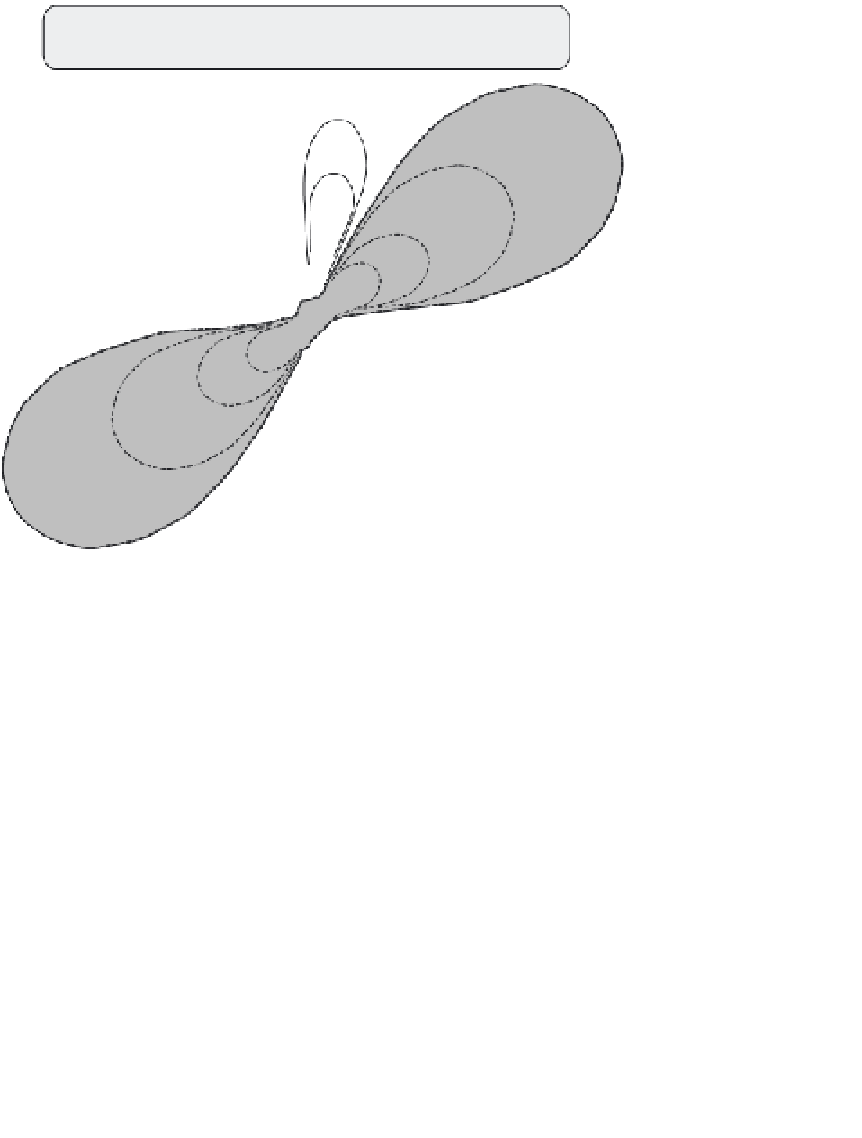Geology Reference
In-Depth Information
Seismic Loading (MPa)
(
+
)
(
-
)
(
-
)
0.0
0.0
0.0
(
+
)
+0.25
-0.25
-0.25
0.0
+0.25
-0.5
Fig. 4.6
Model of stress changes due
to faulting.
Coulomb stress changes modeled for an
M
=
5.7 sinistral strike-slip earthquake with
maximum slip of
∼
0.3 m and a vertical,
7 × 7 km rupture patch. Note the symmetri-
cal lobes of increased (
+
) and decreased
(−) stresses that extend for tens of
kilometers beyond the fault tips despite its
small amount of slip. Depending on fault
orientations within the area affected by
stress changes, faults may be pushed
closer to or farther from failure. Modified
after Toda and Stein (2003).
-1.0
+0.5
+1.0
+1.0
-1.0
+0.5
-0.5
+0.25
0.0
(
+
)
-0.25
-1.0
+0.25
(
-
)
0
20
0.0
0.0
0.0
(
-
)
(
+
)
km
30 cm slip on 7 x 7 km vertical plane
stress-free (Fig. 4.5). These “sticky” patches of
faults have been termed
asperities
. Such patches
may be analogous to irregularities that jut out
from a planar surface and which, if two planar
surfaces were juxtaposed, would be the points
where frictional forces would have to be
overcome in order to permit sliding between the
surfaces. Thus, asperities represent irregularities
that can concentrate stresses along a fault, and
their strength with respect to shear stresses
exerted on them may control when faulting
occurs. If the strength of asperities persists from
one earthquake to the next, it might be expected
that the recurrence pattern would follow a
time-predictable model (Fig. 4.4B).
Alternatively, earthquakes may be thought of
as causing ruptures along a heterogeneous fault
plane in which some strong patches fail to
break. These unruptured regions are termed
barriers
(Fig. 4.5). Aftershocks following the
main earthquake will be concentrated around
these barriers (Aki, 1984). If the fault plane is
considered to be uniformly stressed prior to
rupture, the presence of barriers after faulting
represents a “stress roughening” because the
stress is less uniformly distributed after the
earthquake. If the same strong barriers control
successive earthquakes, such a fault might
display recurrence patterns based on slip-
predictable behavior (Fig. 4.4C).
From the simplest perspective, we envision
stress changes on a given fault as being driven
by far-field tectonic forces, such as those
generated by plate motions. In such a case, we
might expect steady rates of stress changes
along a fault plane. Earthquakes on nearby
faults, however, also change the state of stress in
the crust. When a fault slips, it releases stress
along most of its fault plane and reduces stress
in some of the surrounding crust. But, the fact
that slip goes to zero at the fault tip dictates that
stress also increases in certain directions around
the fault tip (Fig. 4.6). Following an earthquake,
most aftershocks are confined to zones where
the earthquake caused increases in stress.
Although the stress changes are most pro-
nounced in the region immediately surrounding
the newly ruptured fault, an area perhaps 100

































































